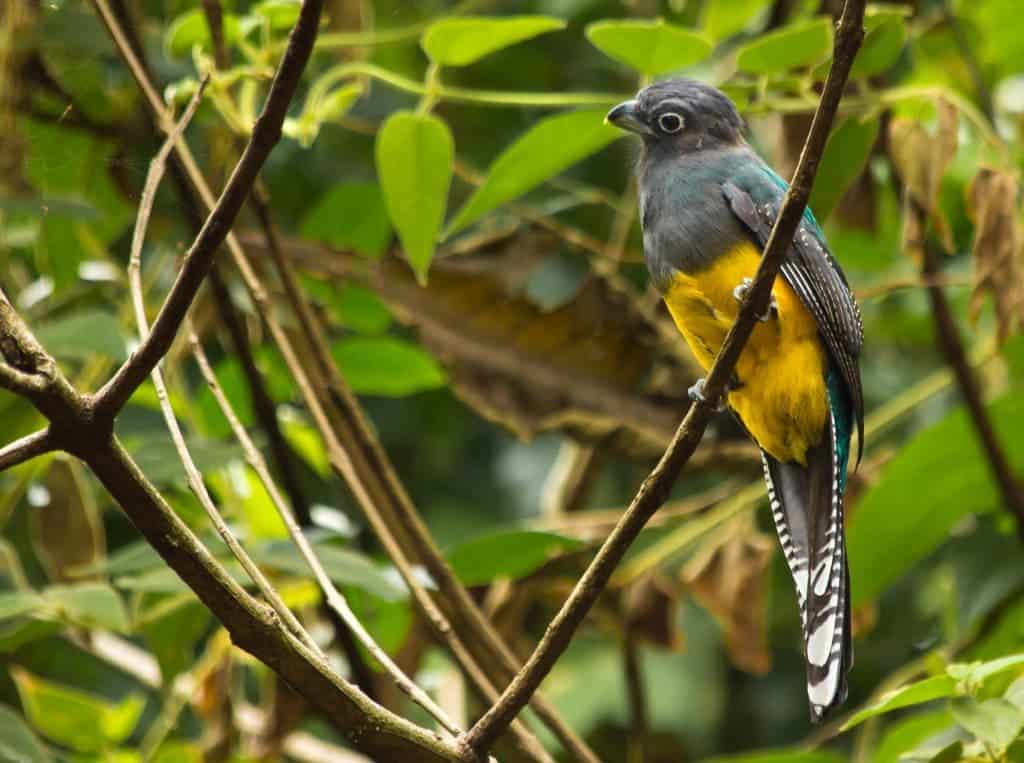An international team of ornithologists reports discovering a new species of bird in north-eastern Brazil. Sadly, the forests it calls home have been almost completely cut down.

The new species has been christened the Alagoas black-throated trogon (Trogon muriciensis), and is part of the Trogonidae family of tropical birds. Comprising around 43 species and almost 110 subspecies, the trogons are some of the most colorful birds in the world — at least, the males. They sport patterns of various colors including iridescent green, blue, violet, and purple, with bright red, orange, or yellow abdomens. The females have to make do with gray or brown feathers.
Bird is the word
“Trogon rufus is easy to distinguish by the unique combination of a green head in males, brown in females, and a yellow belly,” said Jeremy Kenneth Dickens, a researcher at the Museu de Zoologia da Universidade de São Paulo and the Fundación Para La Tierra, and lead author of the study.
“However, with the collection of more material, it soon became recognized as notoriously variable across its distribution.”
The trogon family was first described in 1788 with the black-throated trogon (Trogon rufus), which is quite common in the lower and mid-levels of humid forests spanning from Honduras to northern Argentina.
After its initial description, however, more observations of this bird made it clear that its characteristics varied quite significantly across its range. In other words, it was possible that what we were seeing wasn’t a single species, but rather a family of species.
In order to get to the bottom of it, the team looked at 547 male and 359 female trogon specimens from the collections of 17 different museums. They factored in morphological, vocal, and genetic datasets, as well as spectral and digital data of their plumage, to establish the family tree of the trogons.
All in all, they identified five populations that show signs of reproductive isolation — in other words, five groups of trogons that don’t interbreed and show differences in traits involved in species recognition such as plumage, behavior, or song. Four of these were already known as the Amazonian black-throated trogon (Trogon rufus), the southern black-throated trogon (Trogon chrysochloros), the (somewhat fancily-named) graceful black-throated trogon (Trogon tenellus), and the Kerr’s black-throated trogon (Trogon cupreicauda).
The fifth population, however, wasn’t identified as a distinct group previously. It makes its home in the mountainous stretches of the Atlantic Forest in the Brazilian state of Alagoas (hence its name). This group is distinct enough morphologically, genetically, and through behavior such as song to represent a completely new species, the team explains. It can be distinguished from most other trogon species by the combination of a green head and bright yellow belly.
“It is only known from Estação Ecológica de Murici in the Alagoas state, at just over 500 m elevation, where it occurs in mid-levels of the montane Atlantic Forest,” the team explains.
“It was presumably once more widespread throughout this habitat in the Pernambuco Centre of Endemism before the deforestation of the region.”
According to the team, finding records and individuals of this species in a single, relatively small area, does not bode well. They further explain that during fieldwork in 2019 in the region, they only found 20 individuals and “explicitly avoided” collecting more than one specimen for further study after seeing how low their numbers appeared to be.
The team recommends that the Alagoas black-throated trogon is immediately listed as Critically Endangered, as only around 30 km2 of forest remains in their known range. These forests are also “mostly small fragments and not all suitable for this species,” casting further doubt on their ability to recover.
The paper “Species limits, patterns of secondary contact and a new species in the Trogon rufus complex (Aves: Trogonidae)” has been published in the journal Zoological Journal of the Linnean Society.
Was this helpful?



